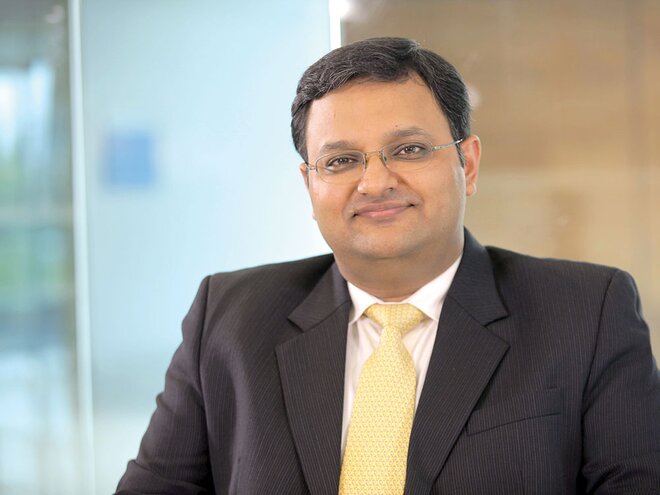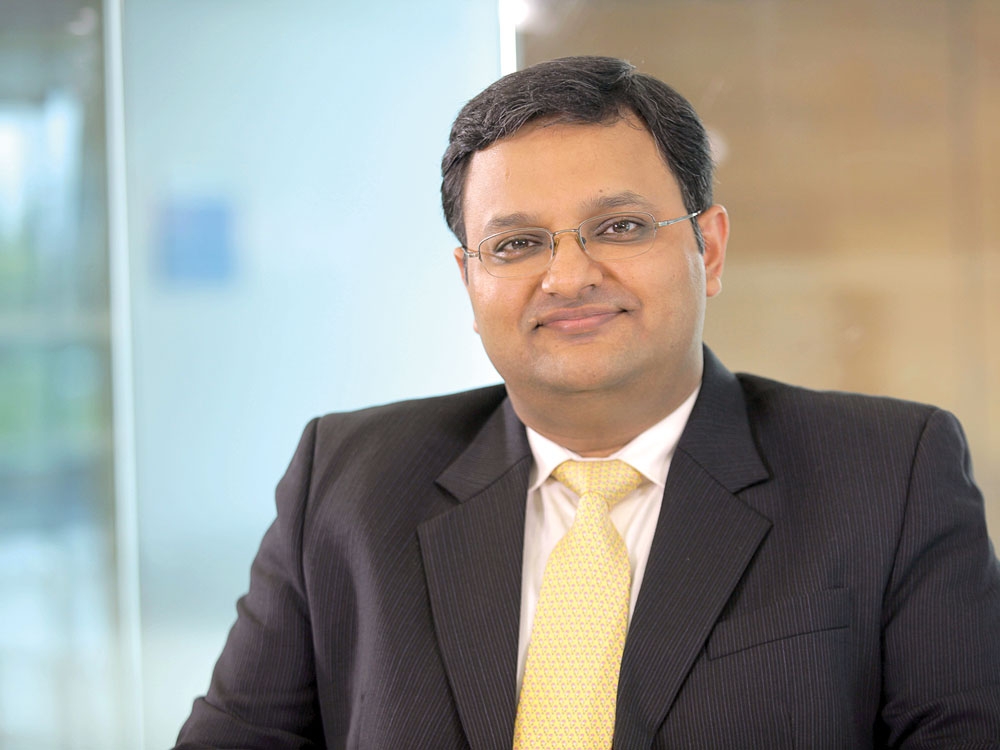
Energy, metal and mining companies are often not seen as wealth creators, given their cyclical nature. Traditional energy sources, like oil and coal, have also been facing challenge from clean energy. Further, companies operating in these spaces have been badly impacted by the pandemic-led lockdown and slowdown. We speak to Rohit Singhania, who manages DSP Natural Resources and New Energy (NRNE) Fund, about the outlook for energy, metal and mining companies.
What are your stock-selection criteria? Many stocks that appear in your universe may have weak balance sheets and P&Ls. How much does that worry you?
Global and local macros have a very strong bearing on the natural resources/energy sectors. Therefore, we use a combination of top-down and bottom-up approaches - top-down factors like global growth, inflation, liquidity, demand-supply and bottom-up factors like company growth, management quality, return ratios, cash flows and valuations are all important inputs in our decision making. Given the cyclical nature of these sectors, risk-reward evaluation is an important aspect of portfolio construction for DSP NRNE Fund (probably more important than the diversified portfolios). Factors like possible drawdowns and liquidity need to be kept in mind here.
While the companies are classified in the same basket of natural resources, every company has a different driver and hence needs to be evaluated accordingly. For instance, in the metals sector, integrated players are preferred in a scenario of rising raw-material prices and vice versa. There are other factors like the mix of value-added products in revenues. In the gas space, there are different metrics to evaluate B2B and B2C businesses. What I am just trying to indicate is that there is a lot of heterogeneity and you cannot just paint all the companies with the same brush.
Another beast to manage is debt. Given the volatility in the profitability of these companies across the cycle, metrics like debt/EBITDA and debt/equity swing wildly. The intermittent dent to balance sheets and profitability of these companies are known factors, often discounted for in valuations. Informed and risk-adjusted calls need to be taken after assessing the direction and delta of change in financial performance and the cross-cycle strength of the business.
Your fund invests predominantly in cyclicals. Doesn't that make it a tactical bet as against a long-term one? Who should invest in your fund and with what expectations?
Yes. Metals, mining and energy are clearly cyclical in nature. Hence, you will notice periods of massive underperformance and outperformance for the fund/sector versus the broader markets. Since the inception of this fund on April 25, 2008, to December 11, 2020, it has managed to deliver a CAGR of about 11 per cent vs 9 per cent for Nifty 500. So, if short-term volatility due to cyclicality can be overlooked, there has been wealth creation over a longer horizon.
When one is investing in a fund whose underlying securities/sectors are cyclical in nature, he/she should be ready to accept long intermittent periods of underperformance. We believe that the potential investors should have sufficient risk appetite and some knowledge of the sectors as well as thematic funds in general. Surely, such investors and their financial advisors (should) have done their homework before choosing to invest in such funds. This is not one for investors with less risk appetite.
What are the niche areas within energy, metal and mining spaces that are not as cyclical and where investors can bet for the long term?
The gas sector increasingly is beginning to show good long-term potential. The government is targeting to increase the share of gas in the primary energy mix from 6 per cent to 15 per cent. More and more businesses and investors looking at decision making with the ESG lens will support the shift towards gas. There are a few B2C gas companies in India, which with lesser cyclicality also find their own niche.
Sustainable energy is another area which will gain share in the longer term. With limited plays available in India, we are playing this theme with our international investments within the portfolio.
The Indian energy, metal and mining space has a sizeable PSU presence. How trickier does this factor make navigating this space?
We focus more on taking a call based on business fundamentals and strength of the company. Irrespective of the companies being public or private, our efforts are towards sticking to the framework and stock-selection criteria talked about before and investing in businesses with good potential at attractive valuations.
Crude oil is one of the biggest casualties of the pandemic, with the US oil futures even turning negative for a brief period. Given this, how do you see oil stocks as investments?
Understandably, transportation and hence oil demand did take a hit because of the pandemic. But with vaccines now beginning to be made available and as we move towards normalcy, we expect a resurgence of global growth and the demand for conventional energy should come back. For the next few years, we believe there is strong potential in the traditional energy companies. They are starting with a low base now, both in terms of valuations and financial returns, and they have managed to exercise good capital discipline. The pessimism around them has probably been exaggerated.
However, there are also concerns of the world reaching peak oil demand soon, and sustainable energy seems like a clear theme to play for the next decade and beyond.
How effective is OPEC now in influencing oil prices? How decoupled are oil prices today from geopolitics?
We do not think that oil prices are decoupled from geopolitics - oil remains a sensitive subject and changing trade relations have the potential to turn the markets. We saw how the year started with a price war between Saudi Arabia and Russia just when demand started taking a hit because of the pandemic. It was soon enough followed by steep production-cut agreements that continue till date. The supply cuts to match demand continue to help in stabilising oil prices, so the effectiveness of OPEC continues to be there. Whether they get worried about oil demand peaking and start competing for market share or they keep prices as their top priority and continue with managing supply - all this is probably anybody's guess.
What opportunity does the gas sector offer to investors? Do elaborate on the various sub-segments like LNG, city gas, etc.
As talked about earlier, the gas sector offers a good long-term potential from the structural shift in the energy mix. There are both B2B and B2C businesses that stand to gain from the demand growth driven by the shift from the conventional sources of energy.
As a country, India produces roughly 50 per cent of its total gas requirements locally and imports the remaining half. Imported gas is in liquid form and is called liquefied natural gas, which is conventionally regasified at the ports before being transported and used. The primary sectors that consume gas are fertilisers, refineries, CGD and power. CGDs are city-gas-distribution companies that supply CNG to vehicles and PNG to households and small industries. These are linked to the economic growth of the country.
Businesses in this value chain offer attractive long-term investment opportunities and have higher valuations that are decoupled from traditional energy companies. These businesses usually have lower debt, strong cash flow generation, strong return ratios and high growth potential compared to conventional energy companies.
Lately, metal and mining stocks have started to attract investor attention. Where are we currently in the cycle for metal and mining stocks? Which pockets look promising and why?
Where we are in the cycle is difficult to estimate. But the global macro factors seem to be aligned in favour - liquidity being pumped in by central banks, rising inflation expectations, economies opening up from lockdowns and distribution of vaccines driving expectations of economic recovery. Importantly, global metal majors have shown capital discipline.
Demand is expected to normalise and is currently being strongly led from the front by China. Supply growth is expected to lag behind over the next couple of years. Capacity addition in the sector usually has a long gestation period and if the demand growth continues to outpace supply addition, there is a promising case for both ferrous and non-ferrous sectors.
Even on valuations, this sector is still below long-term averages and at discounts to the broader equity markets.
How severe is the challenge faced by traditional sources of energy, like oil and coal, from e-tech and cleaner fuel? Will traditional energy be obsolete in a decade or so?
The world is certainly shifting away from traditional energy and at a pace faster than ever before. Costs of wind energy, solar energy and batteries have been falling. At the same time, there is increasing demand for EVs and low-carbon energy solutions. These are structural drivers for the sustainable- energy theme. Importantly, there is increasing policy support too, with the EU Green Deal, US commentary on conventional energy, and multiple countries and MNCs publicly committing to reach zero carbon emissions. So, the challenge is severe and the shift is evident. It's a matter of time that traditional energy sources make way for sustainable energy. Whether it takes one decade or two is anybody's guess but the writing is on the wall that the landscape is going to change at a fast pace.
Your fund also invests overseas. Please elaborate on the opportunities available overseas that Indian investors can profit from.
Yes, there are two BlackRock Global Funds that we invest in: World Energy Fund and Sustainable Energy Fund. Both these funds are managed by an experienced team of professionals at BlackRock and also contribute in reducing portfolio volatility.
The World Energy Fund invests in international oil and gas companies and their allied businesses. This fund provides a high correlation to oil prices, which is difficult to consistently find in the domestic market. These global majors have also managed to exercise capital discipline that has resulted in high payout for shareholders. With improving earnings and returns from the low base currently, valuations should also start recovering.
The Sustainable Energy Fund invests in non-conventional energy companies and their associated businesses. India has hardly any listed options among the sustainable-energy space, and it is a relevant theme in the energy sector for the coming years, which is why we provide Indian investors an opportunity to participate in this theme through this fund. Falling sustainable-energy costs, increasing EV demand, policy support and global focus on net zero carbon emissions are all supportive of long-term growth in this theme.


__w1000__h564__.jpg)
